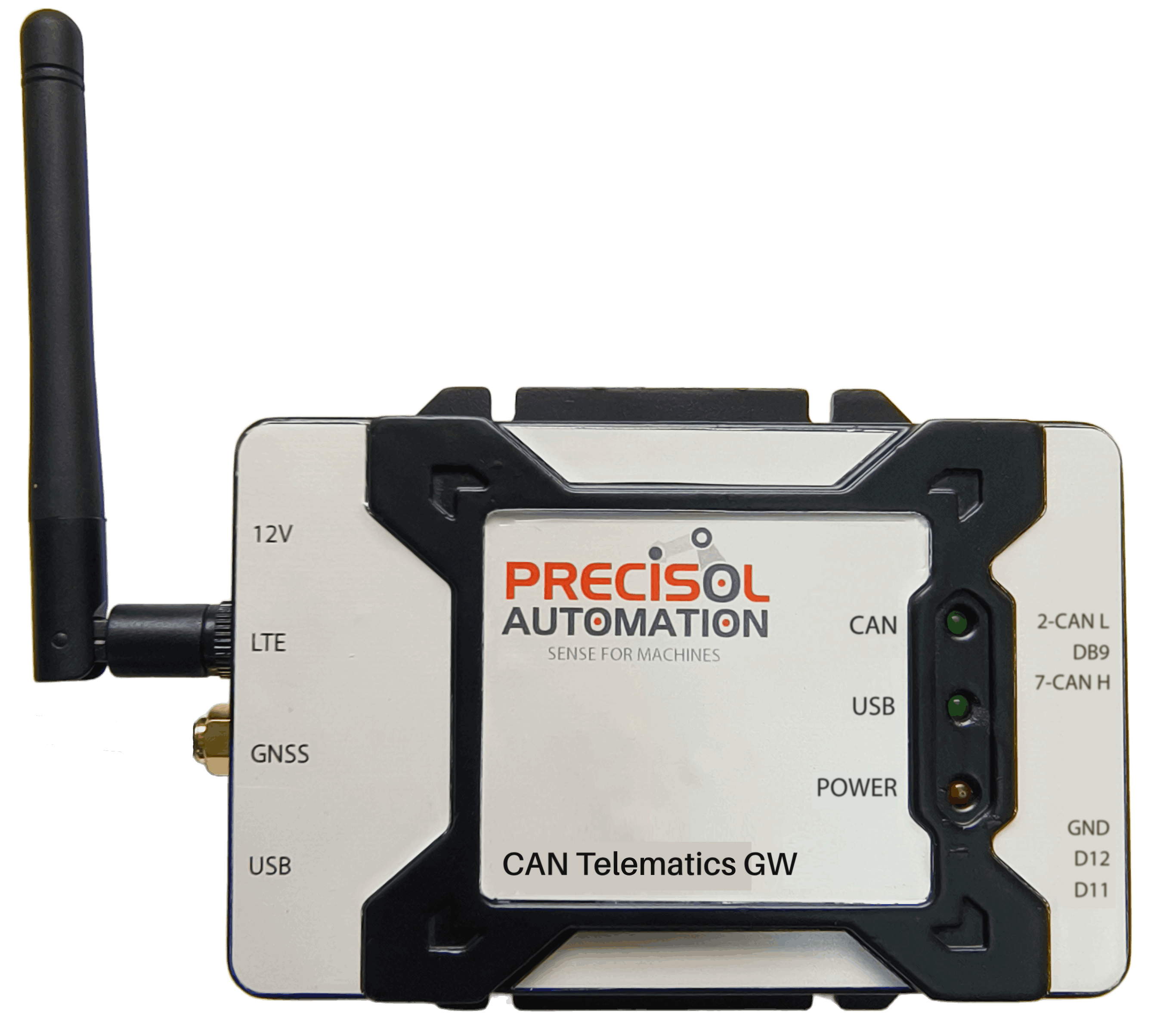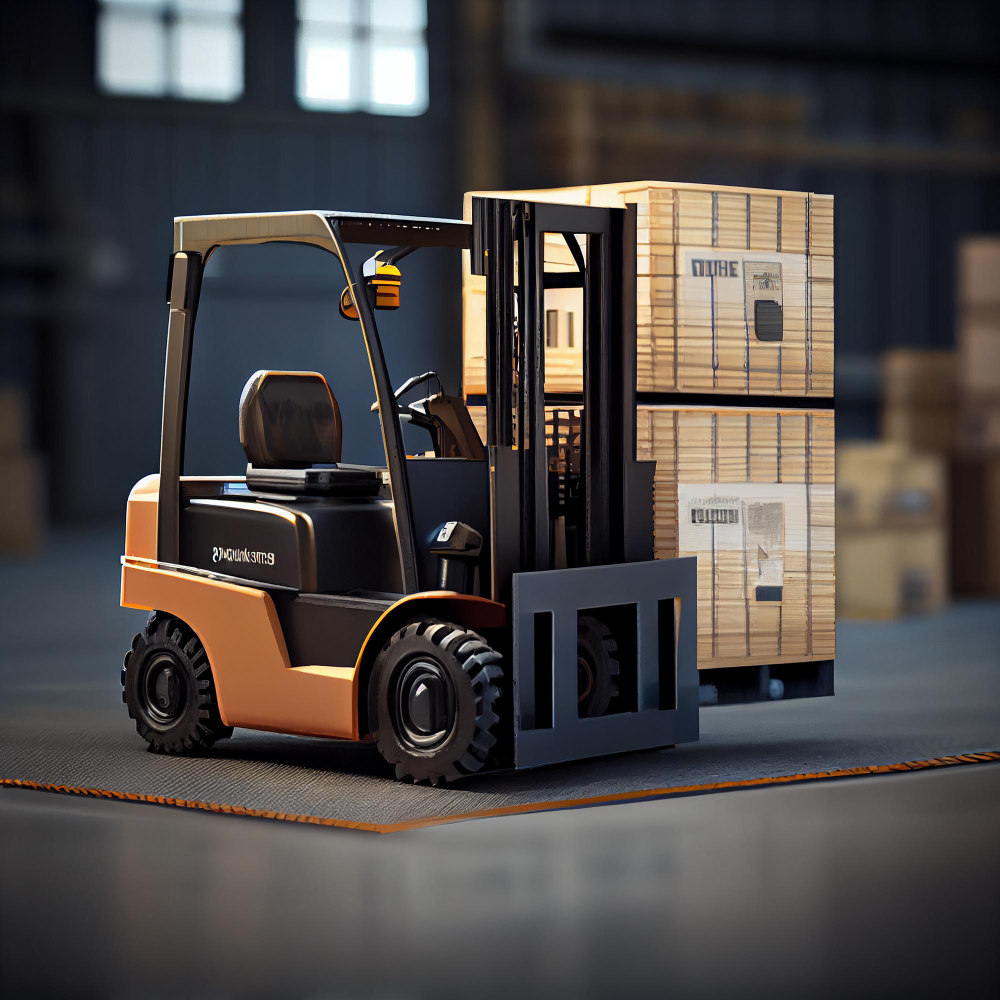The Gateway to a Smarter Warehouse: Why Industrial Forklift Telematics is the Key to Modern Fleet Management
In the fast-paced world of logistics, manufacturing, and warehousing, the industrial forklift is the unsung hero. These workhorses are the the backbone of material handling, but their management often remains stuck in the past, leading to a host of operational challenges. From unpredictable downtime to safety risks and inflated costs, the lack of real-time visibility can undermine even the most well-planned operation. The solution to these challenges lies in a modern, data-driven approach: industrial forklift telematics. By bridging the gap between physical equipment and digital intelligence, a robust system—such as one built around a CAN telematics gateway—can transform a fleet from a liability into a highly optimized, safe, and efficient asset.
The Challenges of Traditional Forklift Fleet Management
Before exploring the solution, it's crucial to understand the problems that many fleet managers face daily. These are the pain points that telematics is designed to solve:

- Operational Inefficiencies & Underutilization: Without precise data, it's nearly impossible to know how your forklifts are truly being used. Are they sitting idle for hours, or are they being overworked? This guesswork leads to an unbalanced workload, where a few vehicles bear the brunt of the work while others collect dust, resulting in premature wear and tear and an overall inefficient use of capital. It's a key source of unnecessary costs and under-optimized operational flow.
- Reactive Maintenance & Costly Downtime:The traditional run-to-fail maintenance model is a financial drain. An unexpected breakdown can bring a critical part of your operation to a screeching halt, leading to missed deadlines and expensive emergency repairs. Even with scheduled maintenance, without knowing the true usage of a vehicle, you might be servicing a machine too early or, more dangerously, too late. This directly impacts uptime and the total cost of ownership.
- Safety & Compliance Risks:Forklifts can be dangerous if not operated correctly. Unauthorized use, speeding, hard braking, and impacts are common issues that jeopardize the safety of personnel and damage inventory. Without a system to monitor and record these events, identifying risky behaviors and ensuring proper training and compliance with safety protocols can be an immense challenge.
- High Fuel and Energy Costs:Inefficient driving habits, excessive idling, and unoptimized routes all contribute to higher fuel or battery consumption. While these costs may seem minor on a per-vehicle basis, they compound across an entire fleet to represent a significant operational expense that can eat into profitability.
The Gateway to Smart Operations: How CAN Telematics Works
At the heart of a modern telematics system for forklifts is the CAN bus—the vehicle's central nervous system. The Controller Area Network (CAN) bus is an in-vehicle networking protocol that allows the various electronic components of the forklift (the engine, transmission, controls, sensors, etc.) to communicate with each other. For a modern forklift, this bus carries a wealth of valuable, real-time information, often following the industry-standard J1939 protocol.
A CAN telematics gateway, like the one from PrecisoL Automation, is a small, rugged device that acts as a bridge. It is hard-wired directly to the forklift’s J1939-based CAN bus, where it continuously reads and collects this rich data. This includes critical parameters such as:
- Engine Hours and Run Time: Essential for accurate maintenance scheduling.
- Engine Speed (RPM) and Coolant Temperature: Indicators of engine health and efficient operation.
- Fuel/Battery Levels and Consumption Rates: The cornerstone of cost management.
- Diagnostic Trouble Codes (DTCs): These are the check engine lights of an industrial vehicle, providing specific details on an impending mechanical issue.
- Vehicle Speed and Location (via GPS): Crucial for safety, route optimization, and geofencing.
The gateway then transmits this data wirelessly via a cellular network to a secure cloud platform. This allows fleet managers to access a centralized dashboard, where all the information is presented in a clear, actionable format. This process effectively transforms a fleet of disconnected machines into a fleet of intelligent, self-reporting assets.
The Role of the Gateway in Transforming Fleet Operations
The implementation of a CAN telematics gateway is not just about collecting data; it's about leveraging that data to fundamentally improve every aspect of forklift fleet operations.
- Enabling Predictive Maintenance with Industrial Forklift Telemetry for Maintenance: This is one of the most significant benefits. By continuously monitoring engine hours, fault codes, and other performance indicators, the telematics system can shift a business from a reactive to a proactive maintenance model. Instead of waiting for a breakdown, the system can automatically generate alerts for specific diagnostic trouble codes (DTCs), allowing technicians to intervene and repair a minor issue before it escalates into a major failure. This industrial forklift telemetry for maintenance reduces unplanned downtime, extends the life of the equipment, and lowers overall maintenance costs.
- Real-Time Alerts & Notifications for Safer Forklift Operations: CAN telematics gateway can enhance safety and operational visibility within warehouse environment by providing alert and notifications. The system continuously monitors critical operator behaviours such as over-speeding, harsh braking, aggressive acceleration, and sudden impacts. These parameters are captured through J1939 data and processed in real-time by the gateway to identify unsafe driving patterns or potential collision events. When any abnormal activity or impact is detected, the system automatically triggers instant alerts and notifications to supervisors or safety managers through SMS, email, or cloud dashboard alerts. This proactive alert mechanism enables immediate corrective actions — such as alerting the operator, scheduling maintenance checks, or temporarily restricting vehicle usage until inspection.
- Optimizing Asset Utilization and Reducing Costs: The data from a telematics gateway provides a clear picture of how each forklift is being used. Fleet managers can identify underutilized machines and relocate them to busy areas or even reduce the overall fleet size. Conversely, a machine showing signs of over-utilization can be flagged for priority inspection. By monitoring idle time and fuel consumption, managers can identify inefficient driving habits and retrain operators, leading to significant savings in fuel and energy costs. The GPS tracking feature can also be used to optimize routes, ensuring forklifts travel the most efficient paths to complete their tasks.
The Return on Investment: Key Benefits
The investment in a CAN telematics gateway yields a clear and compelling return on investment (ROI). The key benefits include:
- Reduced Operational Costs: By optimizing fuel consumption, improving asset utilization, and reducing unnecessary repairs, a telematics system can deliver substantial savings to the bottom line.
- Increased Uptime and Productivity:Proactive, data-driven maintenance prevents costly unplanned breakdowns, keeping the fleet operational and maximizing productivity.
- Enhanced Safety and Accountability: By monitoring and controlling operator behavior, telematics creates a safer work environment and holds operators accountable for their actions.
- Data-Driven Decision Making: The system empowers fleet managers with the insights needed to make informed decisions, transforming guesswork into strategic action.

In an increasingly competitive industrial landscape, the modern warehouse is a connected one. By leveraging the power of a CAN telematics gateway, businesses can transform their forklift fleets from a collection of individual machines into a unified, intelligent, and highly efficient network, ready to meet the demands of tomorrow.


